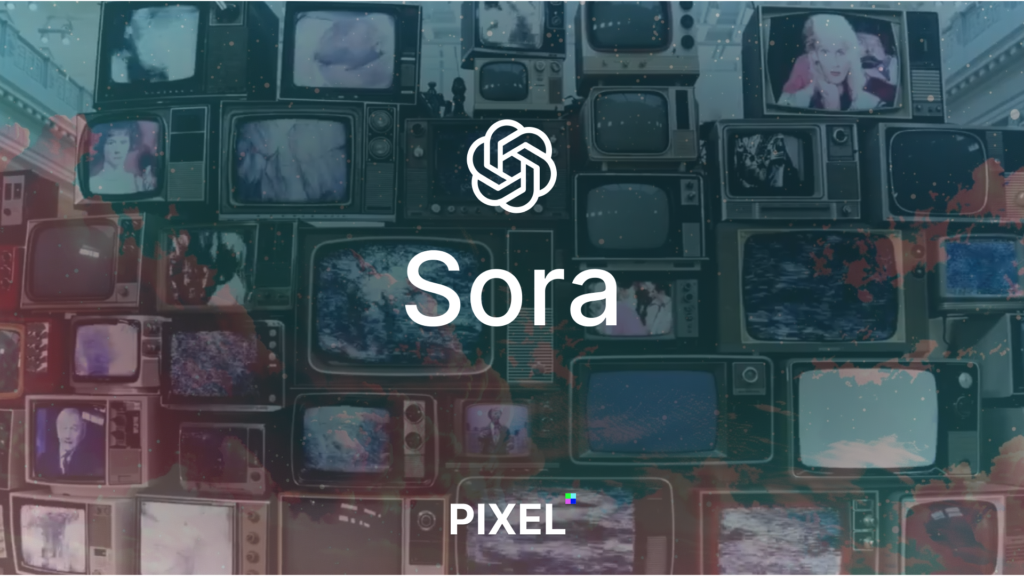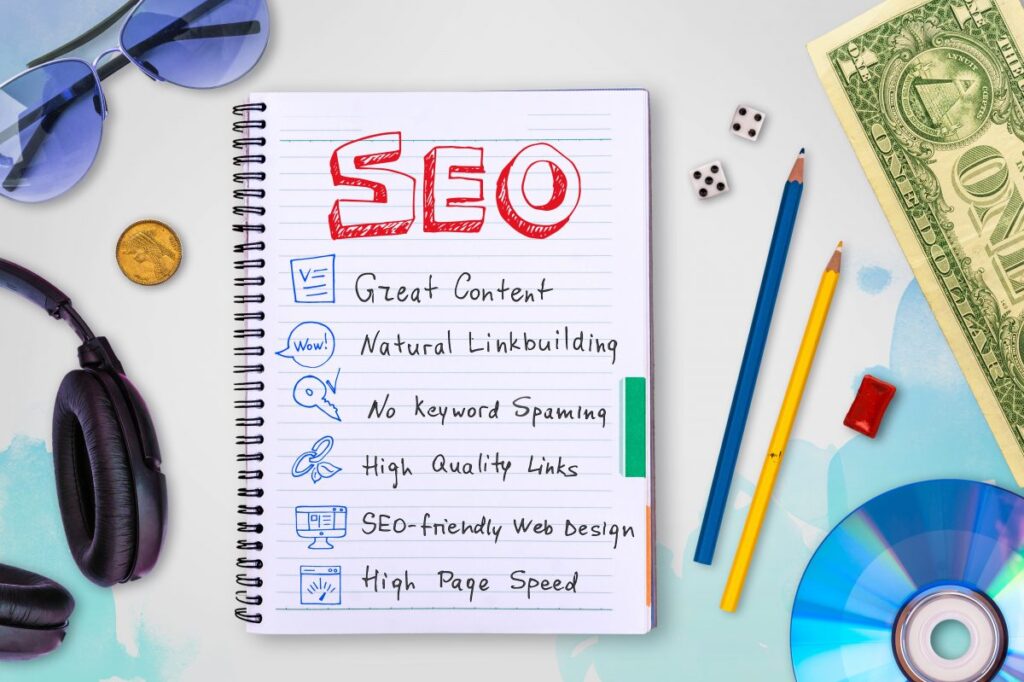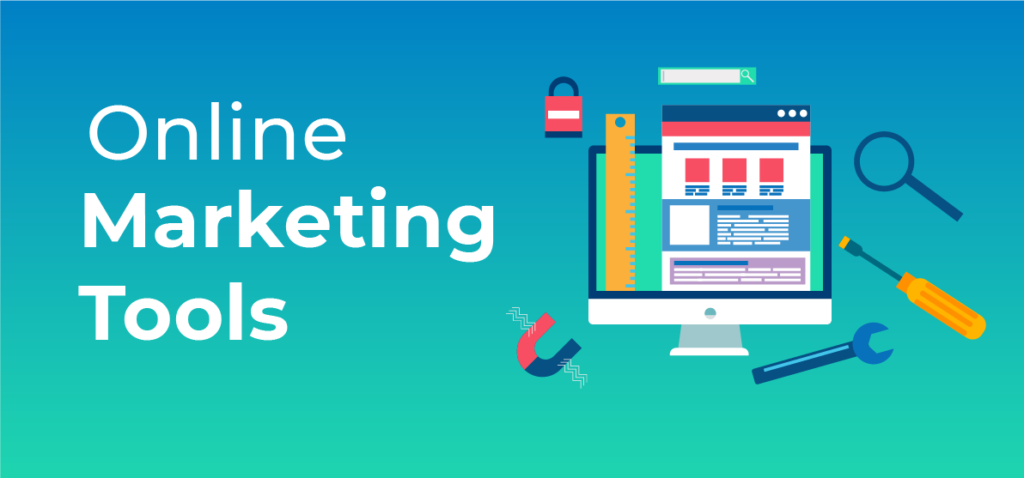Which digital marketing trends will be big and happening in 2024?
We decided to take it upon ourselves to help you out. Undoubtedly, 2024 will bring a host of innovations and shifts in the marketing space. So, you’d need to put a spin on the old ways of digital marketing. Let’s learn how.
Top 11 Digital Marketing Trends in 2024
Historically, we have seen that market trends evolve with technological advancements. Now, these trends change with the purchasing power of the newer generation. No wonder there was a rise in Facebook advertising in 2015-2020, as Millennials became the primary target audience.
Prevalence of Facebook in paid marketing
Similarly, Gen Z’s preference for authenticity and personalization led to influencer marketing. Most digital marketing trends 2024 revolve around using artificial intelligence (AI). Others have to do with Gen Z’s preferences, since they’ve now become a major part of the consumer market.
We’ll also see an increase in personalization and video content. Let’s look at all these trends in detail.
- AI-Driven Interactions (Virtual Assistants and Chatbots)
AI has entered the scene, and it’s here to stay. In 2024, we’ll see more widespread use of AI chatbots and virtual assistants, especially for customer interactions.
These AI-driven interactions will help businesses provide better customer service, reduce response times, and even help with lead generation. Verint’s 2023 State of Digital Customer Experience report found that. 74% of customers have communicated with a business using their chatbot.
That’s not even the most interesting part. 80% of the survey respondents said they expect AI and chatbots to benefit their experience.
Benefits customers receive when they get assistance from a company’s chatbot
Some of these benefits include:
- Saving time and quicker issue resolution
- Easy service experience
- Full understanding of customer intent
- Tailored offers and promotions
Verint’s report isn’t the only indicator of the potential AI-driven interactions hold for businesses. Brandwatch surveyed 516 marketing professionals in September 2023 and asked about their predictions for digital marketing trends in 2024. A whopping 92% gave AI integration in marketing the first spot.
- Social Commerce Integration
Social commerce simply means selling your products or services through social media platforms. As social media is becoming bigger and better, the opportunities for businesses to integrate their e-commerce platforms with social media are also growing.
Let’s give you a few statistics to make this make sense:
- Running a two-hour shopping event on Tiktok can make the same sales as you would in a week in a flagship store.
- A shoppable live stream on Instagram gets 40,000 comments.
- Snapchat’s augmented reality (AR) feature lets people try on makeup products virtually. The app reaches over 75% of 13 – 34-year-olds in countries that make up half of the digital ad spend worldwide, hinting that the opportunities are endless.
Snapchat user penetration
On top of that, an Accenture report predicts that social commerce will be worth $1.2 trillion by 2025, a 3x increase from $492 billion in 2021. So, it makes sense to tap into this trend and get your share out of this trillion-dollar pie.
- Short-Form Content Creation
With the introduction of Instagram’s Reels and TikTok, we’ve already seen the rise of short-form content on social media platforms. But why is this trend becoming more prevalent?
One, people have shorter attention spans now. They prefer consuming content that is quick and easy to digest.
Don’t believe it? In 2000, the average attention span was 12 seconds. Today, it’s around 8.25 seconds.
Reduction in human attention span over the years
Second, short-form content is easier to create. That’s why it has also led to an increase in user-generated content, where consumers are creating content for brands.
You don’t necessarily need expensive equipment or professional editing skills to create short-form content. As long as it’s engaging enough to keep people interested for 30 seconds to a minute, you’re good to go.
But there’s a catch: you only have 2.7 seconds to capture your audience’s attention. So, your short-form content has to hit the right spot immediately.
Some examples of short-form content include social media posts, memes, GIFs, reels, and TikTok videos. These formats allow for quick consumption and easy sharing among users.
The good news is that AI can produce this content for you. Most AI video generation tools only need a prompt to create a video that would otherwise take you hours. We’re already seeing applications of this trend with tools like Pictory, Synthesia, Veed.io, and Elai. Using AI for video generation is quick, effective, and budget-friendly—no wonder it’s emerging as a trend.
Use of AI in video generation
While the use of AI for marketing video generation might not be super widespread in 2024, audacious companies will definitely take the plunge. Others will follow suit in the next few years.
- AI-Generated Marketing Content
AI is now writing marketing content for brands. Not only that, but it is also making marketing videos, doing voiceovers, creating scripts, animating videos, and generating website designs.
In fact, 44.4% of marketers already use AI for content generation, and most believe the content is just as good as human-generated content.
How good is AI-generated content compared to human content
Part of the reason AI-generated content is becoming popular is its efficiency and speed. It can churn out large volumes of content in a short time, freeing up more time for marketers to focus on strategy and analysis.
Also, human limitations do not restrict AI-generated content. An AI tool can generate hundreds of variations of a single piece of content. You can also train the AI tool according to your brand’s tone and style to keep your marketing content consistent across all platforms.
But then again, you can’t solely rely on AI-generated content. Marketers need to give the content a ”human touch” to make it relatable. In short, AI will be your ”assistant” and not the ”creative.”
- Big Data-Backed Hyperpersonalization
Big data is all the hype and for the right reason. It has taken personalization to the next level.
The way it helps in digital marketing is pretty simple. You gather vast amounts of customer data from different touchpoints and organize and analyze it. This helps you understand your audience better and market to them in a way that is more likely to get your desired results, whether a purchase or a sign-up.
Marketing teams can use AI-powered analytics to understand customer behavior and preferences. Understanding customer intent enables hyper-personalization, which goes beyond segmenting your audience based on basic demographics. For instance, AI can be used to derive insights from the data, which can then be leveraged to optimize ad campaigns and target customers.
Microsoft Power BI is one such analytics tool. The business intelligence platform sorts through large data sets and visualizes them into easy-to-read charts and graphs for simpler insight analysis. Similarly, Akkio is an AI-powered forecasting and business analytics tool, whereas Polymer turns your data into a database, improving its interactivity and searchability.
Some industries, such as healthcare, financial services, and telecommunications, are more likely to benefit from big data analytics. Around 60%, 76%, and 87% of the companies in these industries use big data, respectively.
Big data usage by industry
We say ”hyperpersonalization” and not merely personalization because big data makes your approach highly targeted. You not only know what the potential customer wants but also how and when they want it.
McKinsey reports that marketers spend a staggering $50 billion on big data and analytics. Why? To improve the impact of marketing on their business.
- Augmented and Virtual Reality
We talked about virtual ”try-ons” on Snapchat earlier. That’s just one of the many ways companies have started to use augmented and virtual reality in their marketing strategies.
Some other use cases for AR and VR in marketing include:
- Creating immersive experiences for users through branded VR content
- Enhancing product visualization
- Allowing customers to interact with products in a virtual setting
- Offering virtual tours of stores or products
- Personalizing shopping experiences through AR-powered try-on, such as glasses or makeup
- Engaging customers at events through interactive VR games or experiences
Why jump on the AR-VR bandwagon in 2024? It’s bound to bring in better engagement, higher conversion rates, and more revenue. In fact, Statista reports that the global revenue for these digital twin technologies is expected to reach $53.71 billion by 2027.
AR/VR B2C market revenue worldwide from 2017 to 2027
It’s important to understand that AR alone doesn’t always suffice; AI also plays a role in this technology’s success. A use case where AI and augmented reality work in tandem is innovative advertising. A few years ago, AR advertisements, like AR overlays and scannable codes, were futuristic fantasies. Today, businesses can create interactive ads, allowing consumers to explore their products virtually. AI can enhance this experience by showing these ads to the most relevant audience segment.
Similarly, AI makes AR experiences more engaging. For instance, Sephora uses AI facial recognition-powered AR for its virtual try-ons. In the future, we can expect to see more companies using a combination of these two technologies for immersive marketing and advertising experiences.
- Dominance of Video Marketing
Video marketing is expected to be just as big as AI in 2024, if not bigger. We’ve observed this trend in several reports published in 2023.
For instance, The State of Video Marketing 2023 report by Wyzowl shows that 91% of businesses use video in marketing — an all-time high.
Video use over time
Even 70% of marketers who weren’t using video marketing before decided to use it in 2023. The same trend will likely continue in 2024.
Hubspot’s 2023 Video Marketing Trends Report also shows a similar trend. It further goes on to explain the use cases for video marketing:
- 33% marketers for increasing revenue and sales
- 32% marketers for increasing brand awareness
- 32% marketers for advertising products and services
Video marketers’ goals in 2022
In contrast, Wistia’s State of Video Report found that 52% of companies use video marketing for product education. The most common type of videos brands create are product videos. Others include educational videos, webinars, social media videos, customer testimonials, etc.
Primary goals with video creation for businesses
- AI-Driven Marketing Research
Latest estimates show that we created 328.77 million terabytes of data daily. In 2023, it totaled 120 zettabytes. That’s a lot.
Global data generated annually
Even if you narrow it down to merely the marketing data for your company or campaign, there’s still a lot of data to sift through. From social media impressions to website traffic to email open rates, there’s a lot of information to keep track of and analyze. Again, AI proves to be a valuable tool in this area.
Just last year, AI’s market value in marketing was $27.37 billion. By 2028, the figure is forecasted to go to $107.5 billion. A part of this value will be derived from the research capabilities AI brings to the table.
Market value of AI in marketing from 2020 to 2028
As we move into 2024, the amount of data you have to work with will also increase. Previously, you might only be collecting data from, let’s say, ten channels. Now, you must account for additional channels, such as virtual and augmented reality experiences, data from IoT devices, Reddit, TikTok, etc.
AI will take some of the workload off your team in 2024. It can analyze and make sense of large data sets in a fraction of the time it would take you to do it manually.
For instance, instead of scouring your Instagram comment section manually, let AI do it. It will tell you if the consumer sentiment is positive or negative.
- Influence Marketing and Collaboration
Both social ad spending and influencer marketing peaked in 2019. However, the latter has been more resilient in its growth.
Comparison of influencer marketing and social ad spending growth from 2019 to 2025
Nowadays, people don’t trust traditional advertising as much as they used to. They are more likely to trust the recommendations of someone they admire or follow on social media. In 2024, brands will continue collaborating with influencers and use their influence to reach their target audience.
Interestingly, there’s a higher preference for small and micro-influencers than traditional high-level celebrities. Since these influencers have a smaller following but higher engagement rates, their content yields better results for brands.
Type of influencers brands work with
In terms of popular influencer marketing channels, TikTok holds the first place. 56% of brands use it for influencer marketing compared to 51% for Instagram and 42% for Facebook.
For instance, beauty brands like Charlotte Tilbury, Mac Cosmetics, and Chanel Beauty leverage TikTok and Instagram to reach their target audiences.Most popular channels brands use for influencer marketing
- User-Generated Content for Gen Z Engagement
Here’s another trend we sort of touched on earlier: user-generated content (UGC). User-generated content is any form of content created by users rather than brands. Let’s say you’re scrolling through Instagram and see a photo of someone wearing your favorite brand’s jacket. That’s user-generated content.
UGC can be images, reviews, videos, or social media posts. Given that Gen Z is the most social media-savvy generation, it’s no surprise that this trend will continue to grow in 2024.
These are young and ”woke” customers. They prefer reliability and genuineness over polished marketing campaigns, where Dwayne ”The Rock” Johnson tries to sell you a pair of headphones he probably never even used.
That’s one of the biggest problems marketers are facing today. Even though over 90% of marketers believe they create authentic content, consumers are not on the same page.
How authentic is your content? Marketer vs consumer view
What’s the solution to bridge this gap? UGC. Consumers are 2.4 times more likely to find UGC content authentic. Going forward, businesses that use UGC in partnership with influencer marketing campaigns will see higher engagements. After all, customers are more likely to believe your claims if they see someone who looks like them using and enjoying your products or services.
- Predictive Analysis
Marketers will now have to be proactive rather than reactive. The competition is more cut-throat than ever, and relying on traditional marketing strategies is no longer enough. That’s where predictive analysis comes in.
It helps marketers identify customer behavior and predict which marketing tactics will be most effective. For example, marketers can use data from past campaigns and customer interactions to determine which channels best reach millennial consumers.
L’Oréal is an example of a brand using predictive analysis in marketing. The cosmetic brand uses Synthesio’s AI customer intelligence platform to augment product development.
Synthesio’s platform gathers data from over 3,500 online sources, such as beauty forums, YouTube, and blogs. Loréal’s team then uses these data points to predict trends before they even emerge among consumers.
Besides the beauty sector, this strategy is now used in every industry, from food delivery to software testing.
Industries using predictive analysis
Comparative Analysis of Trends
The main correlation between the aforementioned trends is technology, whether it’s in the form of social media or AI. All these trends aim to enhance the customer experience and make marketing more efficient.
A good example of this interconnection is the use of AI in personalization and predictive analysis for influencer marketing. Suppose your company is looking for an influencer to collaborate with. AI can help you identify the best-fit influencers based on your target audience and their online behavior.
Implementing Trends in Marketing Strategy
You likely already have a marketing strategy. Now, you can’t make a new one from scratch in 2024, can you? Of course not.
However, you can adapt and evolve your current strategy to incorporate the latest trends. For example, consider incorporating live streaming or social commerce into your social media marketing plan.
Or, use generative AI to personalize your content for different target audiences. For example, some tools you can use for AI voiceovers are Synthesys, Lovo.ai, Murf, and ElevenLabs. As for social commerce platforms, opt for Instagram, Facebook, Pinterest, Snapchat, TikTok, Twitch, WeChat, and YouTube.
Future Projections
Planning for 2024 doesn’t mean staying stagnant until then. It means being prepared for the future and staying ahead of the curve. One thing to keep in mind here is that Google plans to go cookieless soon, meaning that traditional forms of data collection and targeting will no longer be as effective.
Braze’s tweet about Google going cookieless
Similarly, social media platforms are constantly evolving, and new ones may emerge in the next few years. You must stay on top of these changes, too.
Conclusion
Let’s sum up this whole guide in a few words. AI, personalization, and short-form, authentic video content will make your marketing efforts successful in 2024.
How much of each trend and where you use it will depend on your business and target audience. The bottom line is to keep up with the changing times and not overlook genuineness and customer-centricity in the process.
Additional Resources
McKinsey Marketing & Sales, Big Data, Analytics and the Future of Marketing & Sales
Wyzowl The State of Video Marketing 2023 Report
Hubspot’s 2023 Video Marketing Trends Report
Wistia’s State of Video Report
Beehiiv: Complete Newsletter Platform Review
FAQs
Which technologies will revolutionize marketing in 2024?
AI, personalization, and short-form video content will be key players in the future of marketing. Influencer marketing and predictive analysis will also be highly effective in this space.
Will social media still be relevant in 2024?
Social media will continue to play a significant role in marketing efforts in 2024. However, the platforms’ use might change. For instance, social commerce and live streams will be the new norm.
How will generative AI impact digital marketing in 2024?
Generative AI will help in creating personalized content at scale. It will also allow brands to reach new target audiences and enhance customer engagement through interactive experiences.







